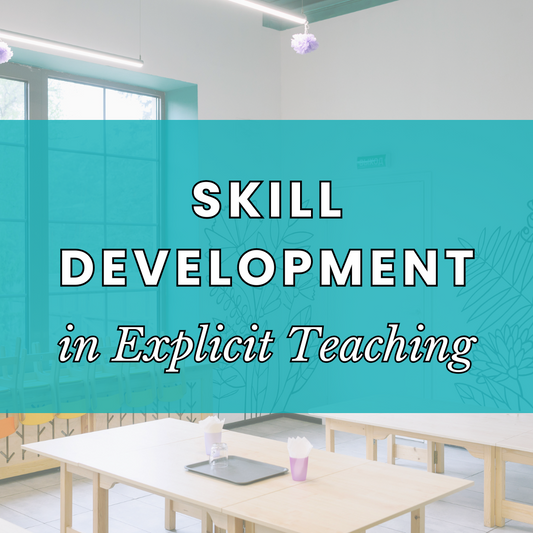
The Importance of Modelled Instruction in Explicit Teaching
Share
Modelled instruction is a cornerstone of explicit teaching, offering students a clear and concrete example of the concept or skill being taught. By demonstrating how to perform a task or solve a problem, teachers provide clarity, break down complex processes, and set a standard for students to emulate. This post explores the benefits of modelling in explicit teaching and provides actionable strategies, including how to use worked examples effectively.
Benefits of Modelled Instruction
Modelled instruction plays a vital role in helping students grasp new concepts and skills by breaking them into manageable steps. Here are some key benefits:
- Clarity in Learning: When teachers demonstrate a process or skill, it helps students visualise the steps, making abstract concepts easier to understand. Seeing the process in action improves comprehension and retention.
- Confidence Building: Students gain confidence when they watch a teacher model the correct way to approach a problem or task. This confidence translates into higher engagement during practice activities.
- Skill Development: By observing and then replicating the steps shown, students actively develop their skills. This progression builds both competence and independence.
- Formative Assessment: Modelling allows teachers to gauge students' understanding by observing how they interact with the example and respond during the check for understanding. Teachers identify areas needing additional support and address misconceptions early.
How to Use Worked Examples in Modelled Instruction
Teachers use worked examples as a powerful strategy in modelled instruction, demonstrating step-by-step how to solve problems or complete tasks in real time. Completing the worked example in front of students ensures clarity and engagement.
Here’s how to integrate worked examples into your lessons:
- Choose a Relevant Example: Select an example that directly aligns with the skill or concept you are teaching. Ensure it connects clearly to the lesson’s learning intention to make the learning purposeful and focused.
- Break It Down Step-by-Step: Demonstrate solving the problem or completing the task in front of your students. Use think-alouds to explain each step and share your reasoning, making the process transparent and accessible.
- Encourage Student Interaction: Pause during the demonstration to engage students with questions or prompts like, “What should I do next?” or “Why is this step important?” Use strategies like whiteboard responses or pair-share activities to maintain active participation and check for understanding.
- Use Visual Aids: Incorporate tools like graphic organisers, infographics, or concept posters to visually reinforce the process being modelled.
- Transition to Guided Practice: After completing the worked example, allow students to practise with similar problems while you provide support. Gradually reduce scaffolding as they gain confidence.
Tools for Effective Modelling
Here are some tools you can incorporate into your modelled instruction to make it more impactful:
Posters
Posters can define concepts in a visually engaging way, making them accessible to students during the lesson. For instance, a poster illustrating "Prime Factorisation" can serve as a quick reference point. However, remember that posters should complement real-time worked examples, not replace them.
Infographics
Infographics are great for summarising concepts. Students can paste these into their workbooks or learning journals as a reference for future tasks. For example, an infographic on “Steps to Solve a Math Problem” can guide students as they practise independently.
Graphic Organisers
Graphic organisers are excellent tools for structuring skills and concepts. Use them during modelling to scaffold the steps required to complete a task. For example, a “Four-Digit Numbers” organiser can break down place value concepts before students use it independently.
Conclusion: Set Students Up for Success
Modelled instruction is a crucial element of explicit teaching, giving students a clear example to follow and the confidence to practise and master new skills. By integrating worked examples, visual aids, and interactive strategies into your lessons, you can enhance student understanding and foster greater independence. Whether you’re teaching maths, literacy, or any other subject, modelled instruction ensures students are equipped with the tools they need to succeed.



